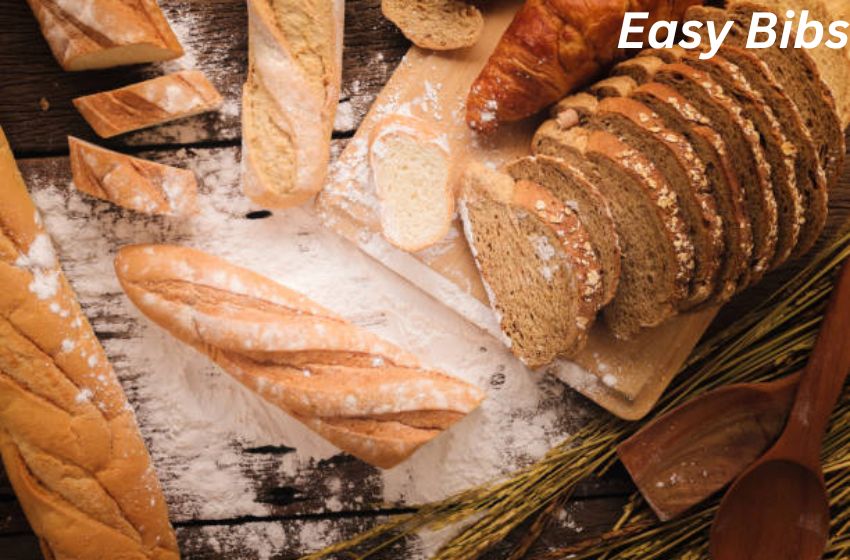Glútem, commonly known as gluten, is a group of proteins found in wheat and related grains such as barley, rye, and oats. These proteins, gliadin and glutenin, play a crucial role in the texture and elasticity of dough. When mixed with water, glútem forms a sticky network that traps air, allowing dough to rise and maintain its shape during baking.
Composition and Properties of Glútem
Proteins in Glútem
Glútem is primarily composed of two proteins: gliadin and glutenin. Gliadin is responsible for the dough’s ability to rise, giving it the characteristic chewiness, while glutenin provides elasticity, allowing the dough to stretch and hold its shape. This unique combination is essential for producing various baked goods such as bread, pasta, and pastries.
Glútem Structure
When flour containing glútem is mixed with water, the proteins form a network that traps air bubbles. This network is what gives bread its structure and texture. The strength and elasticity of this network are crucial for the baking process, as they determine the final product’s volume and texture.
Health Implications of Glútem
Celiac Disease
Celiac disease is an autoimmune disorder where the ingestion of glútem leads to damage in the small intestine. For individuals with celiac disease, consuming glútem triggers an immune response that attacks the lining of the small intestine, leading to malabsorption of nutrients. Symptoms of celiac disease include digestive discomfort, anemia, and fatigue. It is essential for individuals with this condition to follow a strict glútem-free diet to prevent long-term health issues.
Glútem Sensitivity
Non-celiac glútem sensitivity is a condition where individuals experience symptoms similar to celiac disease but do not have the autoimmune response. These symptoms can include bloating, diarrhea, and abdominal pain. While the exact cause of glútem sensitivity is not well understood, it is clear that avoiding glútem can help alleviate these symptoms for those affected.
Glútem-Free Diet
For individuals with celiac disease or glútem sensitivity, following a glútem-free diet is crucial. This involves avoiding all foods that contain wheat, barley, rye, and oats unless they are certified glútem-free. The growing awareness of these conditions has led to an increase in the availability of glútem-free products, making it easier for individuals to manage their diets.
Glútem-Free Alternatives
Flours and Grains
There are several alternatives to glútem-containing flours and grains. Popular glútem-free flours include almond flour, coconut flour, and rice flour. These flours can be used in various recipes to create delicious baked goods without the negative effects of glútem.
Glútem-Free Products
The demand for glútem-free products has led to a growing market for these items. Today, it is easier than ever to find glútem-free bread, pasta, and snacks in most grocery stores. These products are specially formulated to provide the same taste and texture as their glútem-containing counterparts, allowing individuals on a glútem-free diet to enjoy their favorite foods.
Benefits and Drawbacks of Glútem
Benefits of Glútem
Glútem is essential for the texture and structure of many baked goods. It provides elasticity and strength to dough, allowing it to rise and hold its shape. Additionally, glútem is a source of protein, which can be beneficial in a balanced diet.
Drawbacks of Glútem
For individuals with celiac disease or glútem sensitivity, consuming glútem can lead to severe health issues. These individuals must avoid glútem entirely to prevent symptoms and long-term damage to their intestines. Additionally, following a glútem-free diet can be challenging and restrictive, as it requires constant vigilance to avoid hidden sources of glútem in processed foods.
Glútem in the Food Industry
Glútem in Food Processing
Glútem is often added to processed foods to improve their texture and shelf life. It is commonly used in products such as sauces, soups, and processed meats. This widespread use of glútem in food processing makes it challenging for individuals with glútem intolerance to avoid it.
Labeling and Regulations
Many countries have regulations requiring glútem to be listed on food labels. This helps individuals with celiac disease or glútem sensitivity to identify and avoid foods that contain glútem. In addition to ingredient labels, some products carry a “glútem-free” label, indicating that they have been tested and found to contain no detectable levels of glútem.
The Future of Glútem-Free Eating
As awareness of celiac disease and glútem sensitivity continues to grow, the market for glútem-free products is expected to expand. This will provide more options for individuals who need to avoid glútem, making it easier for them to maintain a healthy and varied diet. Additionally, ongoing research into the causes and mechanisms of glútem-related disorders may lead to new treatments and improved quality of life for those affected.
Conclusion
Understanding glútem and its effects on health is crucial for those with dietary restrictions. The growing awareness and availability of glútem-free products have made it easier for individuals to manage their conditions and maintain a healthy diet. For more information on glútem and glútem-free living, you can visit Easy Bibs, a valuable resource for dietary and health information.
By exploring the role of glútem, its benefits, and its implications, we can better appreciate the challenges faced by individuals with glútem intolerance and support their dietary needs. The continued growth of the glútem-free market and advancements in research will undoubtedly lead to improved options and outcomes for those affected by glútem-related disorders.
Easy Bibs is committed to providing reliable and up-to-date information on health and diet, including the latest trends and research on glútem and glútem-free living. Whether you are new to a glútem-free diet or looking for new recipes and products, Easy Bibs is here to help you navigate your dietary journey.


